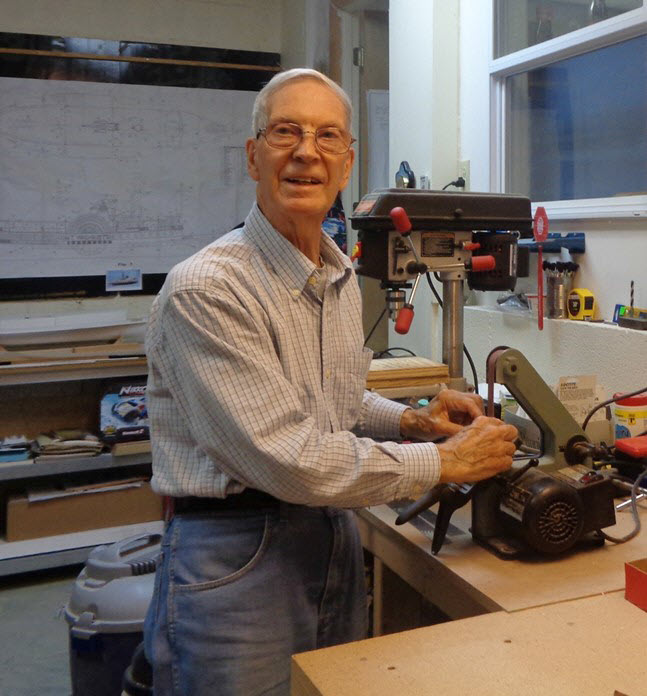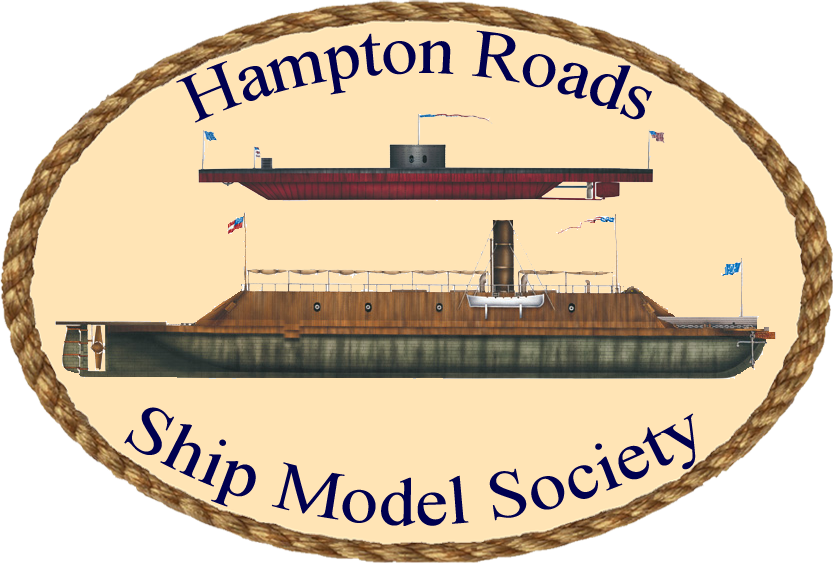Tony Clayton

I started model building in my early teens, mainly rubber-powered, balsa wood flying models from kits. Also, I built one small “jet” powered speedboat (about 6 or 7 inches long) which I tested in our bath tub. It almost flew from end to end of the bath.
Like many other modelers, there was a big gap in my modeling due to family and career. My restart came after we moved to Virginia. The first model ship I built was Phantom, a pilot boat, from a Model Expo kit. After working on other models from kits, I found some of them not historically accurate, or having parts that didn’t fit too well. So I made modifications to some kits to make the finished items more to my taste (technically known as “kit bashing”).
An example of this was a “museum quality” kit of the Oseberg Viking Ship ( built about 820 AD and excavated from a burial mound in 1904 ) which was short two planking strakes, including the main wale or meginhufr (the strongest plank from end to end of the ship), so I made these and incorporated them in the model.
In 2005, my wife and I took our two young granddaughters to the Mariners’ Museum. We spent time at the Model Makers Booth talking with Dave Baker, HRSMS Skipper at that time. As a result, I joined HRSMS to take part in the NRG conference which we hosted that year. Since then, I’ve been quite active with HRSMS, including arranging monthly program topics and presenters for the last eight years.
In 2007, I designed a small (6” long) model kit of a steam tug boat, based on the Dorothy (Hull #1 from the Newport News Shipbuilding Company). This is a simple kit of four parts which can be assembled by beginning modelers. The kits are given to interested youngsters at the Model Makers Booth. I am aided in this endeavor by my wife (chief inspector, etc.) and occasionally Dave Baker (machining). We have completed 600 of these kits. In 2016, we added another kit, based on the USS Monitor (also about 6” long and made up of four parts). We have completed 200 of these kits. My workshop has taken on the appearance of a factory production line! I am now retiring from this in order to devote more workshop space and time to my own modeling.
I tend to make boats rather than sailing ships in order to avoid large amounts of rigging work, e.g. R/C model of Speakeasy, 27” long, a 1920’s rum-runner. I use R/C equipment from toy cars, and it works well. I’ve made several small boats and take pleasure in ensuring they look realistic. They take less time to build than sailing ships and take up less workshop space. How-ever, now I intend to get back to building a model of the
Lake Washington, a 45” long R/C walking-beam steamboat, which I started years ago, but left on the workbench to complete “later.”
